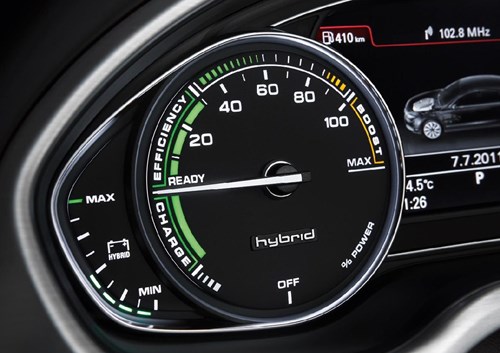All You Need To Know About Hybrid And Electric Cars
Due to the lack of choice and the pathetic quality of locally assembled cars, people had turned towards imported used cars. These cars were put out of the reach of customers due to the alleged lobbying of the local car mafia, which resulted in exorbitant duties.
A couple of years later, the duties on hybrid cars were slashed by the government, which gave our people an opportunity to import decent cars and caused an influx of hybrid cars on the roads of Pakistan. Although hybrid cars have been around for a couple of years now, some people are still confused about the drive-train of these vehicles and mix them with Electric Vehicles. Keeping that in minds I have written this small descriptive which would help people distinguish Hybrid Cars from Electric Cars:
Hybrid Cars
These types of cars have two power sources, a battery pack and an internal combustion engine (petrol engine). The battery on these cars do not have to be charged by plugging them into a power socket. The battery is charged when a driver decelerates, it is called re-generative braking (literally means battery is charged when you brake), and it turns kinetic energy into electrical potential energy.
These cars start on the battery and can stay on electric power alone until you cross the 40 kph barrier, after crossing the 40 kph barrier the car automatically convert to the petrol engine. However, these kind of hybrids do not have a high distance range of electric power even if you keep it under 40 kph, it wont travel very long distance on the battery alone and the engine will take control after driving the car for 1-2 km.
These type of hybrids give higher mileage in the city because of constant braking (battery charging) but lower mileage on the highways because it works like a normal on the highways. Internationally, these cars come with a 160,000 km warranty for the battery. The hybrid cars we see on the roads in Pakistan work on the same principle mentioned above.
Plug-in Hybrid Cars
These cars also have two power sources, an engine and a battery pack. Batteries on these cars can be recharged by two ways: First – as the name suggests, by plugging it in the socket, and second – by regenerative braking.
Plug-in hybrid system works in a similar way like the normal hybrid and is essentially same (as mentioned above), but plug-in batteries are more powerful and as a result they can go longer distances and achieve higher speeds on the electric power alone. For example, the Toyota Prius plug-in can reach speeds upto 100 kph and distances upto 18 km on the battery power. Engine will kick in after you pass the above mentioned limits. Plug-in hybrids are more expensive than conventional hybrids. Some of the modern hyper car makers are using this technology in their cars, where batteries and engine works simultaneously to power the wheels for optimum performance. They can also work on battery power and engine power separately, achieving mileage unheard of in hyper cars.
Electric Cars
Powered by battery packs, these cars run on electric power only. An electric car works just like any other rechargeable electrical device (for example a cell phone). Drawbacks of these include high charge time because it takes 6-8 for an electric car to recharge completely on an average. Another drawback being it’s short distance range on a full charge.
Most electric cars can be useful if a person does not travel long distances. For example, from home to office and back would be fine but normal house hold chores and other requirements (so called ghar ki gari) cannot be fulfilled by most electric cars.
With the advancements in electric car and battery technology, this problem will be solved soon as strides are being made to improve battery efficiency, durability and capacity. Intercity travel is also complicated in these type of cars because you would need to stop over for at least 6 hours. Some countries are planning a battery exchange system, where you would own the car but not the battery. The battery would be loaned to you for a fair and reasonable monthly charge , and car producers would open up charging station across the frequently traveled and busy highways. Electric car owners could charge their cars or exchange their empty batteries for fully charged ones at a nominal cost. The system will ensure easy and hassle-free removal and installation of batteries.
Electric cars require very low maintenance as compared to cars with internal combustion engine. They are also cheaper to run with zero-emissions. Electric cars help reduce pollution and global warming too, in countries where electricity is produced using renewable and solar sources.
Range Extender Electric Cars
Range Extender Electric Cars are cars powered by electric motor only and run on the same principle as normal electric cars, except for a slight difference. A range extender electric car has a small engine which never powers the car’s wheels but works as an “in-car generator” which only charges the car’s battery .
These type of electric cars were made to tackle the problem of short distance range in a pure electric cars. Battery is charged through plugging in an electrical socket and by the engine. When the car’s battery is running out of power, the engine then starts charging the battery . The engines used in these type of cars are small and even if most of the charging is done by the engine, the car would still give a very high mileage when compared to a normal car powered by an internal combustion engine.
I hope this would clear up some confusions in the minds of the readers who did not know the difference between these car technologies.



HI Guys , Please advise which thing is more beneficent in terms of security , Push Start or Key Ignition
very good and informative Danish sb.